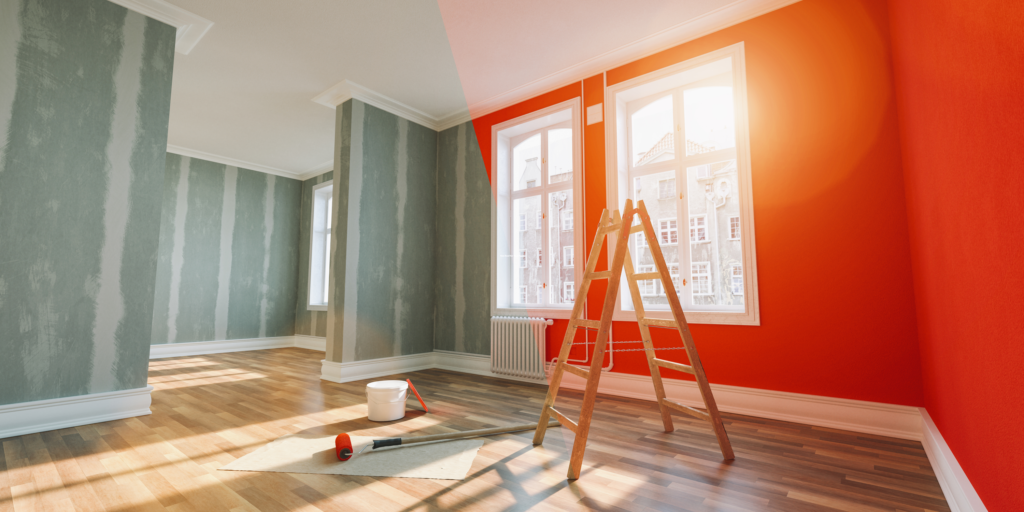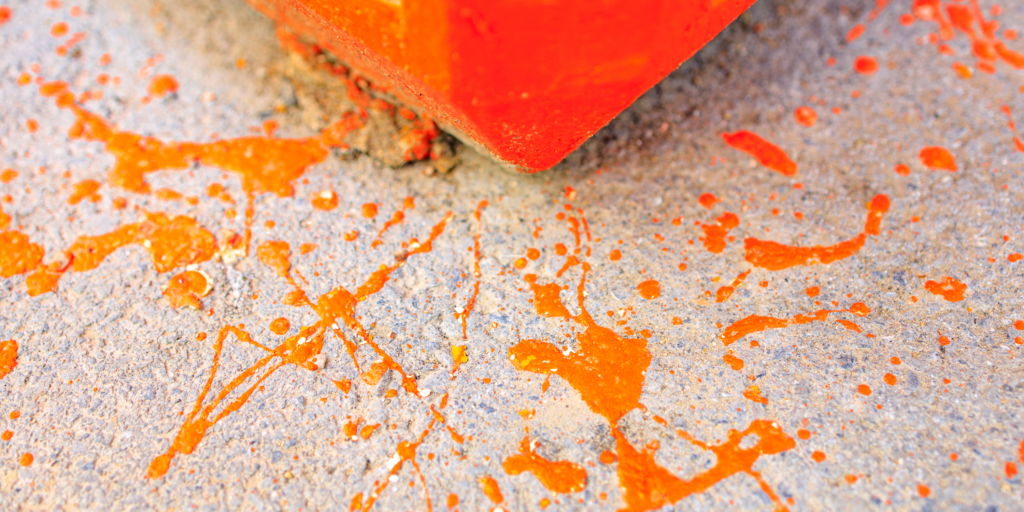Painting your house is fun and may revitalize your home. You may express your style and build a welcoming home for your family. Should you paint before or after moving in? Each choice has pros and downsides. We’ll discuss both perspectives to help you choose wisely.
Pros and cons of painting before moving in
Painting your house before or after moving in is a common question. Both solutions offer pros and cons, so weigh the pros and cons before choosing.
Painting before moving in is convenient. By painting ahead, you can avoid moving furniture and things when painting. Your new home will seem clean and painted, giving you a fresh start.
However, there are downsides. Splatters and smells from painting can linger throughout the house. Paint before moving in may require extra cleanup and ventilation before settling in.

You should also consider personal preference. Some people like newly painted walls, while others prefer painting after settling in. Assessing your priorities and timetable will aid decision-making.
Painting before or after moving in depends on your needs. You must compare convenience with potential disruptions and select a decision that meets your needs and tastes.
Factors to consider when deciding on timing
Timing matters when painting your home. Consider numerous variables before deciding.
Consider the walls in your new home. If they merely need a fresh coat of paint, painting before moving in may be preferable. You can have a completely redesigned look from day one and avoid disruptions.
If repairs or improvements are needed before painting, it may be better to wait until after moving in. This lets you inspect and fix any damage.
Think about your house’s size and the project’s scope. Painting a whole house while living there is difficult. If you can’t move out temporarily or it might inconvenience your family or pets, waiting until after moving in may be easier.
Consider personal preference and convenience. Some prefer to paint their new home precisely how they envisioned it before moving in, while others prefer to make changes after a while.
Benefits of painting after moving in
Painting your house after moving in has several advantages to painting before. Consider these benefits:
1. Personalization: A new home is a chance to add your own style and preferences. By painting after moving in, you can choose colors that represent your personality and create a pleasant atmosphere.
2. Accurate color choices: Choosing paint colors beforehand may seem wise, but seeing how they look against furniture and decor might be crucial. Waiting till after you move in ensures that the colors match your furniture.
3. Reduced stress: Moving is difficult enough without painting. By waiting to paint, you may adjust to your new surroundings and focus on one project at a time.
4. Practicality: Painting empty rooms before moving in may waste paint if future touch-ups or modifications are needed based on how the area is used once equipped. Waiting enables for essential improvements without wasting resources.
5. Establish emphasis points: After unpacking and organizing each room, find spots for accent walls or unique design elements. Delaying painting gives you this knowledge to improve specific regions.
Considering these benefits and your personal circumstances, such as timeline constraints or urgency for immediate aesthetics improvements versus long-term practicality, will help you decide when to paint, resulting in greater satisfaction with your newly decorated home!
Tips for painting while living in the house
1. Prepare: Before painting, plan and prepare. This includes gathering all materials, covering furniture and floors with drop cloths or plastic sheets, and removing fragile or costly items.
2. Use low-odor paint: Painting while living in the house can cause fumes. Choose low-odor or zero-VOC paints to reduce strong scents during and after painting.
3. Paint one room at a time: Avoid painting many rooms at once. You can temporarily move furniture and belongings while working on other areas of the house in this room.
4. Create a temporary painting studio at home. A garage, basement, or spare room can be used to store supplies, mix paint colors, and set up tools without disrupting other house activities.
5. Inform family members: If you live with relatives, let them know your painting schedule so they can alter their routines. Everyone must know which locations are off-limits owing to wet paint or continuing work.
6. Take breaks: Painting while doing chores can be physically and mentally tiring. Take frequent short breaks to refuel before returning to the project.
7. Clean up after each session: Wipe surfaces with moist cloths or vacuum dust particles around painted areas to prevent dust buildup from sanding walls or scraping old paint layers.
Allow enough time for each coat of paint to cure before applying the next layer or rearranging furnishings. Rushing might cause smudging or uneven paint coverage.
9. Cover brushes and rollers with plastic wrap when taking a break from painting to prevent drying. This will make cleaning them easier and let you use them for touch-ups.
10. Ventilation: Open windows and use fans during and after painting to reduce odors. If using strong-smelling traditional paints, this is crucial.
Common mistakes to avoid during the painting process
Many people make blunders when painting their houses. Avoid these pitfalls and ensure a smooth painting procedure by knowing them.
One of the major faults is improper surface preparation before painting. Skipping this step can cause paint to flake or stick poorly. Clean the walls, remove loose paint, and sand uneven areas.

Using cheap paint or tools is another mistake. Buying high-quality paint will improve coverage and durability. Cheap brushes and rollers give stains or uneven application.
Another mistake homeowners make is not priming the walls. Priming smooths the surface for paint, especially when covering stains or dark hues. Without this step, numerous coats of paint may be needed for full coverage.
People also neglect ventilation when painting. Inhaling paint fumes for long durations is unhealthy, so open windows and doors or use fans while painting.
Avoid rushing through the job. Slowly applying thin layers of paint will give you a professional finish. Excellent outcomes require patience!
Conclusion: The decision depends on personal preference and circumstances
Personal preferences and circumstances determine when to paint your house. There is no single answer to this question.
Benefits of painting before moving in. It gives you a blank slate and lets you pick colors that match your style. You won’t have to worry about furniture or other items getting in the way whilst painting.
However, painting after moving in has perks. It lets you live in your new room and see how natural light influences different regions before choosing paint colors. Being situated in your new house with all your possessions unpacked might also be more convenient.
Time limits, money, and house interior wall conditions should be considered while choosing a date. Before moving in, make major repairs or renovations to prepare for painting.

